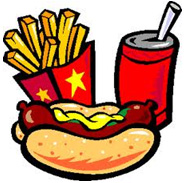 Cholesterol is a soft, fat-like substance. It’s found in our blood and in all the body’s cells. If your cholesterol is high (200-239 mg/dl or higher) it can build up in the walls of arteries bringing blood to the heart and brain. This narrows arteries and reduces blood flow through them. If a blood clot forms and blocks blood flow, a stroke or heart attack can occur.
Cholesterol is a soft, fat-like substance. It’s found in our blood and in all the body’s cells. If your cholesterol is high (200-239 mg/dl or higher) it can build up in the walls of arteries bringing blood to the heart and brain. This narrows arteries and reduces blood flow through them. If a blood clot forms and blocks blood flow, a stroke or heart attack can occur.
There are two main types of cholesterol. LDL cholesterol is bad because it’s deposited in artery walls, increasing the buildup of plaque. High levels of LDL cholesterol (130-159 mg/dl or higher) raise your risk of coronary heart disease and stroke.
 HDL (high density lipoprotein) cholesterol is the good cholesterol. A high level of HDL (60 mg/dl or higher) lowers your risk of heart disease and heart attack. HDL cholesterol tends to carry excess cholesterol back to the liver, where it’s removed from the body.
HDL (high density lipoprotein) cholesterol is the good cholesterol. A high level of HDL (60 mg/dl or higher) lowers your risk of heart disease and heart attack. HDL cholesterol tends to carry excess cholesterol back to the liver, where it’s removed from the body.
Triglyceride is the most common type of fat in the body. A high triglyceride level (150 mg/dl – 199 mg/dl or higher) combined with low HDL cholesterol or high LDL cholesterol seems to speed up atherosclerosis.
If you have high blood cholesterol, eating a healthy diet, controlling weight and getting regular physical activity are very important to lower your risk.
Additional links and information on Cholesterol:






